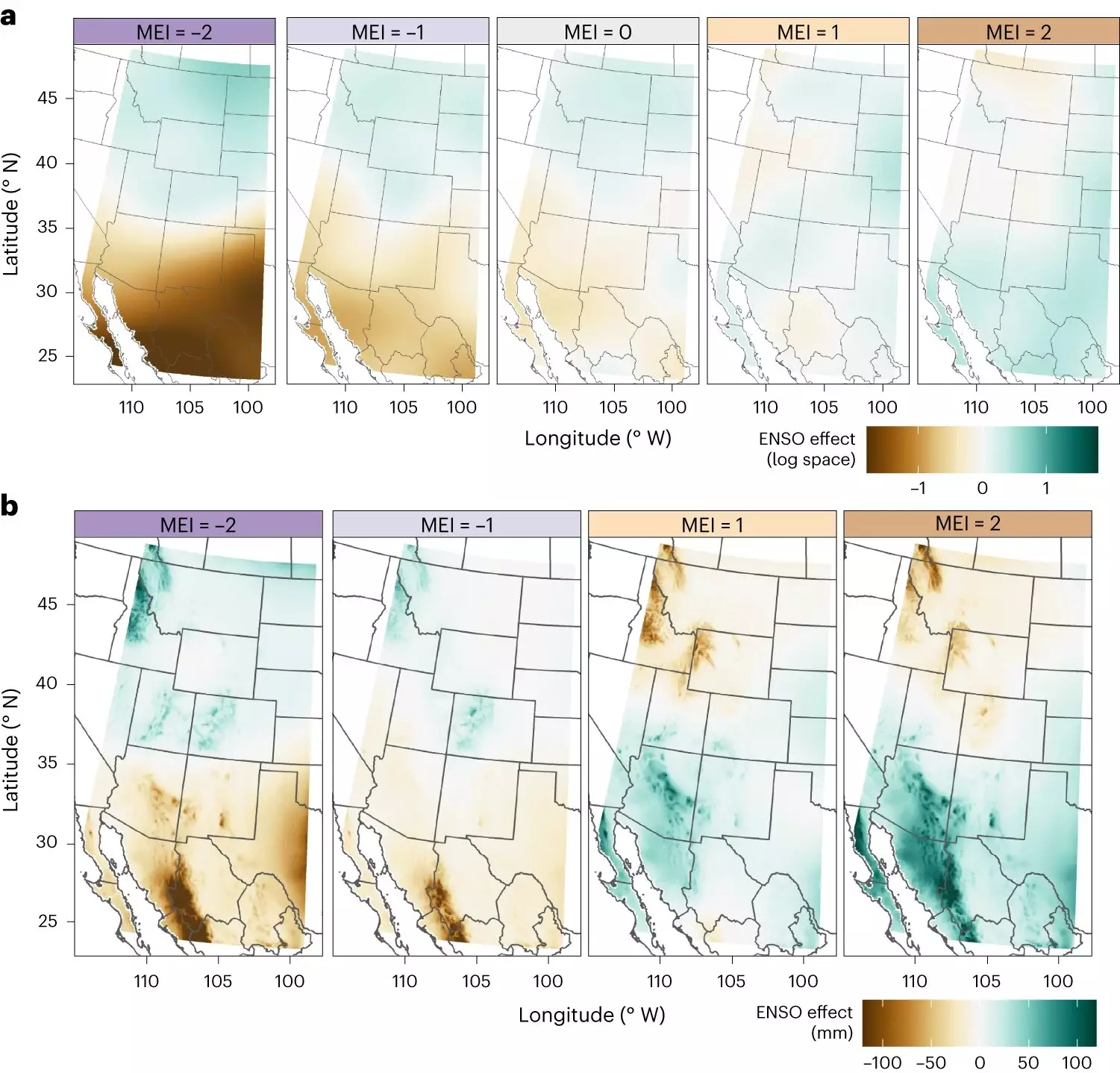Mountains have a significant influence on the precipitation change in western North America, particularly during El Niño and La Niña events. This new research provides valuable insights into the relationship between mountains, El Niño, and water allocation in the Colorado River region. By analyzing 150 years of rain and snow data, researchers have discovered trends of increasing winter precipitation in the north and decreasing trends in the south. The study also highlights the role of mountains in amplifying rainfall on their west side and limiting precipitation on their east side. These findings have important implications for water conservation planning in one of the most water-stressed regions of the world.
Accurate winter precipitation predictions are crucial for water allocation and conservation planning. Since most precipitation in western North America occurs during the winter, understanding the amount of rainfall during this critical period can help stakeholders prepare for upcoming drought and implement water conservation measures in advance. By improving the prediction of winter precipitation, cities, farmers, water managers, and member states of the Colorado River Compact can avoid being caught off guard and actively engage in water conservation efforts.
El Niño and La Niña events, collectively known as the El Niño Southern Oscillation (ENSO), have a significant impact on global temperatures and precipitation patterns. El Niño refers to warmer-than-normal ocean temperatures, while La Niña signifies cooler-than-normal ocean temperatures in the Pacific Ocean. These anomalies affect rainfall and extreme weather events worldwide. In this study, the researchers focused on the intermountain West, an area that has been historically understudied in relation to ENSO patterns.
To understand the effects of El Niño and La Niña on winter precipitation in the intermountain West, the researchers analyzed historical water gauge readings dating back to 1871. These readings were then correlated with ENSO trends recorded by the Multivariate ENSO Index maintained by the National Oceanic and Atmospheric Administration (NOAA). By linking precipitation levels to specific geographic locations and elevations, the researchers gained valuable insights into the relationship between ENSO and winter precipitation.
The presence of mountains in the intermountain West amplifies the effects of El Niño-related precipitation. Due to a phenomenon known as the orographic effect, mountains push up moist air from the Pacific Ocean, causing it to release precipitation on the western side. However, this leads to drier conditions on the eastern side of the mountains. During an El Niño event, this amplification effect is further intensified, resulting in significantly higher rainfall on the west side and reduced precipitation on the east side of the mountains.
Impact on Northern and Southern Regions
The study revealed distinct patterns in winter precipitation changes between the northern and southern regions of the intermountain West. In the north, the Sierra Nevada mountain range acts as a barrier, influencing the flow of air and precipitation. As a result, precipitation change in the north does not follow a continuous scale but operates more like a light switch – either occurring or not occurring based on the strength of the ENSO event. In contrast, the south experiences a more linear relationship between El Niño temperature difference and precipitation change.
Understanding the different responses of the northern and southern regions to ENSO events has significant implications for water managers. In the north, forecasts based on the strength of El Niño or La Niña are more informative, while in the south, quantitative temperature change estimates would be more useful. By incorporating these insights into water management strategies, stakeholders can make more informed decisions regarding water allocation and conservation measures. Collaboration with NOAA to combine data and modeling tools could further enhance the accuracy of winter precipitation forecasts.
The influence of mountains on El Niño and La Niña-induced precipitation changes in western North America is a critical aspect of water conservation planning. By analyzing historical data and considering the orographic effect, this research provides valuable insights into the relationship between ENSO events, mountains, and winter precipitation. These findings can inform water management practices, allowing stakeholders to anticipate drought conditions, prepare in advance, and actively engage in water conservation. With water being a determining factor in western North America’s economy and large cities, the implications of this research are of utmost importance.



Leave a Reply